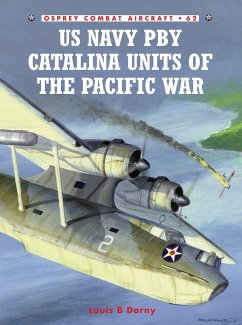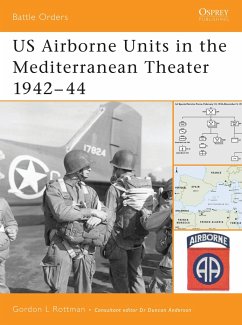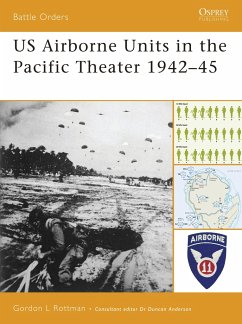
US Navy Pby Catalina Units of the Atlantic War
Versandkostenfrei!
Versandfertig in über 4 Wochen
19,99 €
inkl. MwSt.
Weitere Ausgaben:

PAYBACK Punkte
10 °P sammeln!
Several books have been written about US naval air patrol operations in World War II (1939-1945), but none do full justice to the role played by patrol squadrons of the US Navy in the longest, most bitterly fought campaign of the war, the Battle of the Atlantic. From the Arctic to the Equator, anti-submarine aircraft of the US Navy patrolled both sides of the stormy Atlantic alongside their Allied counterparts. They escorted merchant convoys through the submarine-infested waters, protecting the crucial lifeline from the United States to Great Britain and the Mediterranean that carried troops a...
Several books have been written about US naval air patrol operations in World War II (1939-1945), but none do full justice to the role played by patrol squadrons of the US Navy in the longest, most bitterly fought campaign of the war, the Battle of the Atlantic. From the Arctic to the Equator, anti-submarine aircraft of the US Navy patrolled both sides of the stormy Atlantic alongside their Allied counterparts. They escorted merchant convoys through the submarine-infested waters, protecting the crucial lifeline from the United States to Great Britain and the Mediterranean that carried troops and supplies for the ultimate liberation of North Africa and Europe. The PBY Catalina, in which most of these vital missions were flown, was the most successful flying boat ever designed. Built in greater numbers than any other, it served the maritime air forces of all principle Allied nations, as well as the four branches of the US military. Except for a handful of Martin PBM Mariners, the Catalina was the only long range patrol bomber in the US Navy's inventory when the USA entered World War II. Though considered obsolete in 1939, it served in significant numbers until war's end and for many years after. Its total contribution to victory can only be surmised and the number of ships and lives saved by the PBY's mere presence over convoys will never be known. However, US Navy PBYs sank 19 Axis submarines, all identified by the author from contemporary evidence. Photographs of the Catalina in service in the Atlantic are rare but the author has assembled over 80 through research in official archives and private collections. Related Titles PV Ventura/Harpoon Units of World War II (Combat) Kriegsmarine U-boats 1939-45 (New Vanguard) Sunderland Squadrons of World War II (Combat)













